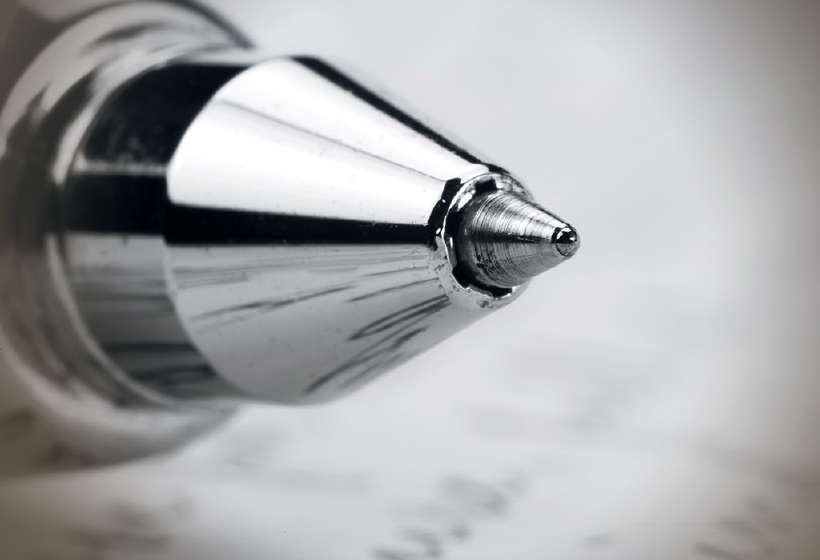Why is the Ball-point Pen Called So?
Home / Science for Kids / 5Ws & H For Kids / Why is the Ball-point Pen Called So?
Writing is one of the most important inventions. Humans first used brushes for writing, then thick reeds were used. Feathers were used in medieval Europe for writing.
In the mid-19 century, metallic pens and nibs were widely used, while the fountain pen was produced in 1884 by the American, LE Waterman. However, these pens had a lot of problems. The ink would spill and blot very frequently and writing was cumbersome.
The first ball-point pen was invented by an Hungarian journalist, Ladislo Biro, in 1938. Biro had noticed that the type of ink used in newspaper printing dried quickly and did not smudge the paper. He decided to make a pen using the same type of ink. However, that thick ink could not flow through the normal pen nib, so he tried something else. And that is how the ball-point-pen was born.

The anatomy of a ball-point pen
The ball-point pen has a hollow body in which an ink-refill is inserted. The refill has a thick ink and so it doesn’t leak like a fountain pen. The part of the refill that writes has a tiny metallic ball, which is partially outside the refill body and partially in contact with the thick ink.
It is to this ball that the ball-point pen owes its name.
When the pen moves across the surface of a paper, the ball rotates. In the process, the side of the ball which is in contact with the ink touches the paper, leaving the ink mark. As the pen slides over the paper the ball keeps rotating, bringing the ink to the surface and enabling you to write.
The World War II connection
During the second World War, the British Air Force used the ball-point pen. The air force needed a new type of pen one that would not leak at higher altitudes, as the fountain pen did when the plane was in the air. This lead to the popularity and widespread use of the ball-point pen.
![Why is the Ball-point Pen Called So? [Illustration by Shinod AP]](/media/5wh-146_1_hu1c9369209363f1c7eefe32acce7ae83a_3259_820x0_resize_q60_box.gif)
A ball-point-pen has several uses. As the ink is thick, it doesn’t require a blotting paper and nor does the writing smudge when water spills in the paper. The pen writes faster and and can write even on rough surfaces. However, the writer’s hand gets tired while writing with the ball-point-pen. This is because a greater amount of pressure is required to write with it.
So the next time you pick up your ball-point pen to write, look closely at the tip. You will surely see the tiny ball which does all the wonder.
443 words |
4 minutes
Readability:
Grade 6 (11-12 year old children)
Based on Flesch–Kincaid readability scores
Filed under: 5ws and h
Tags: #air force, #fountain pen
You may also be interested in these:
The First Woman to Fly High in the Air Force